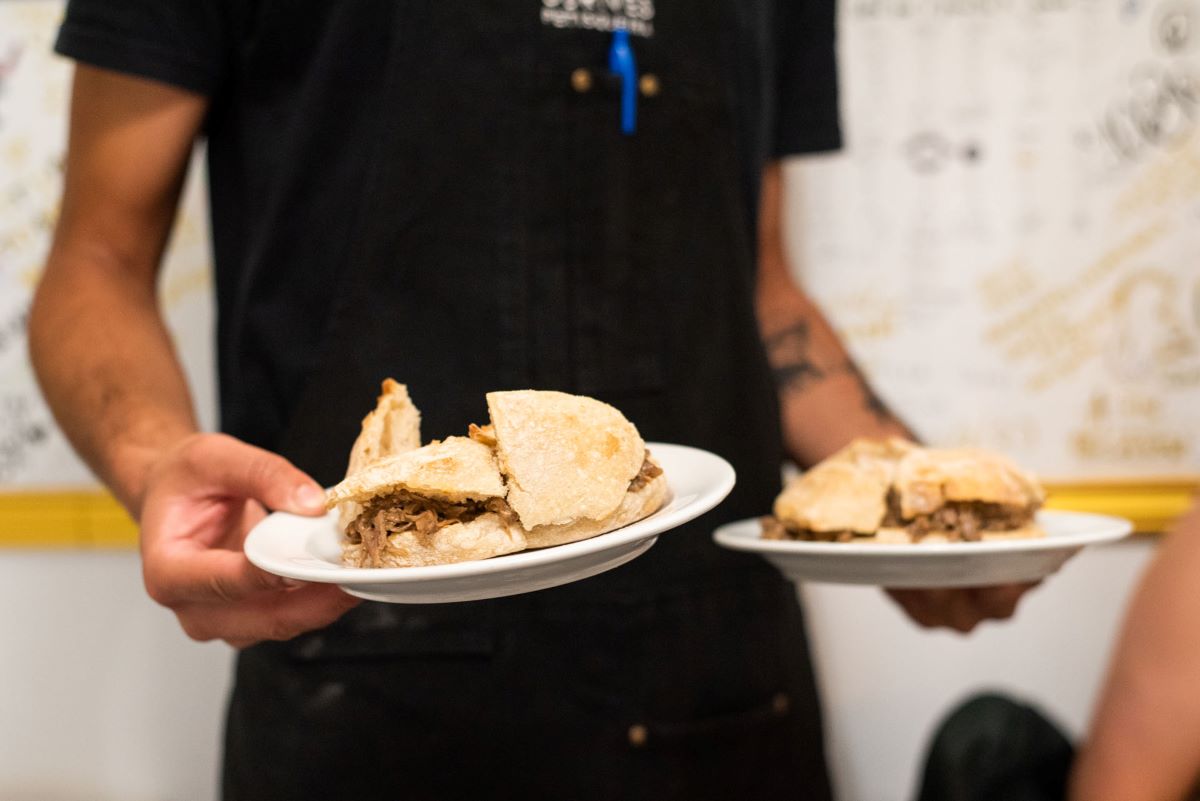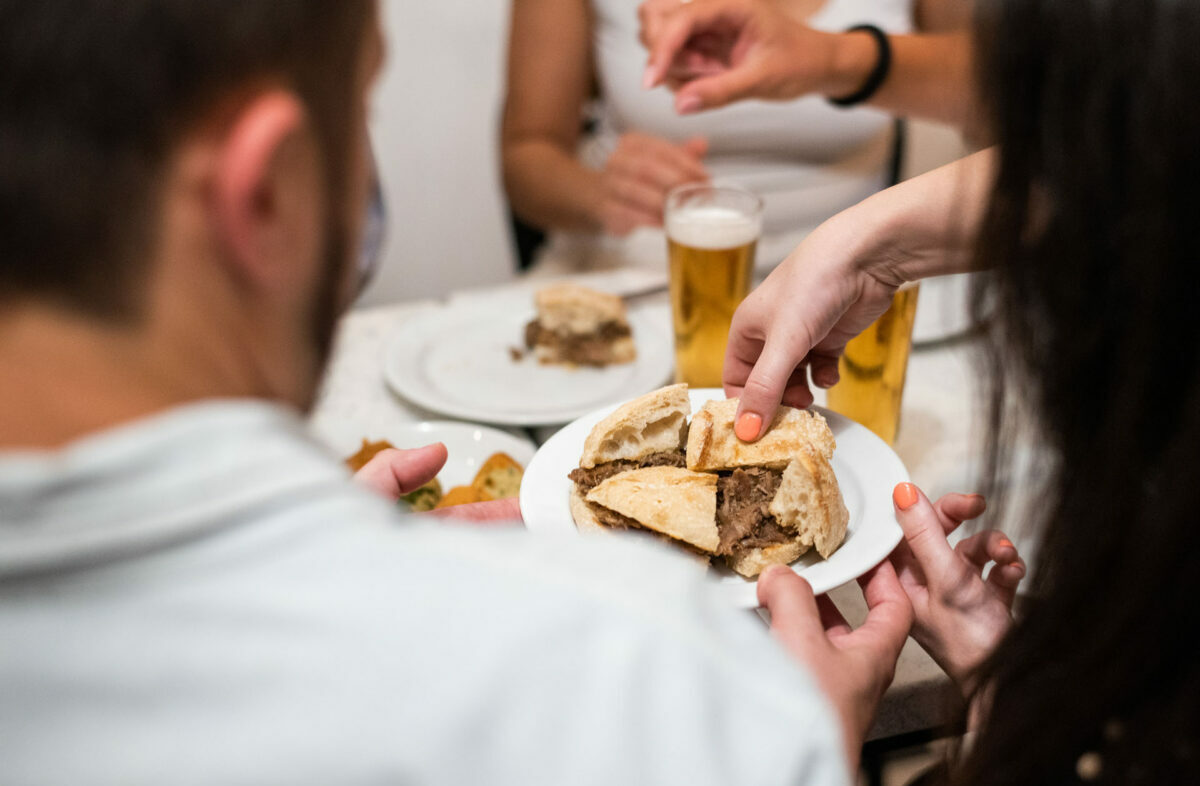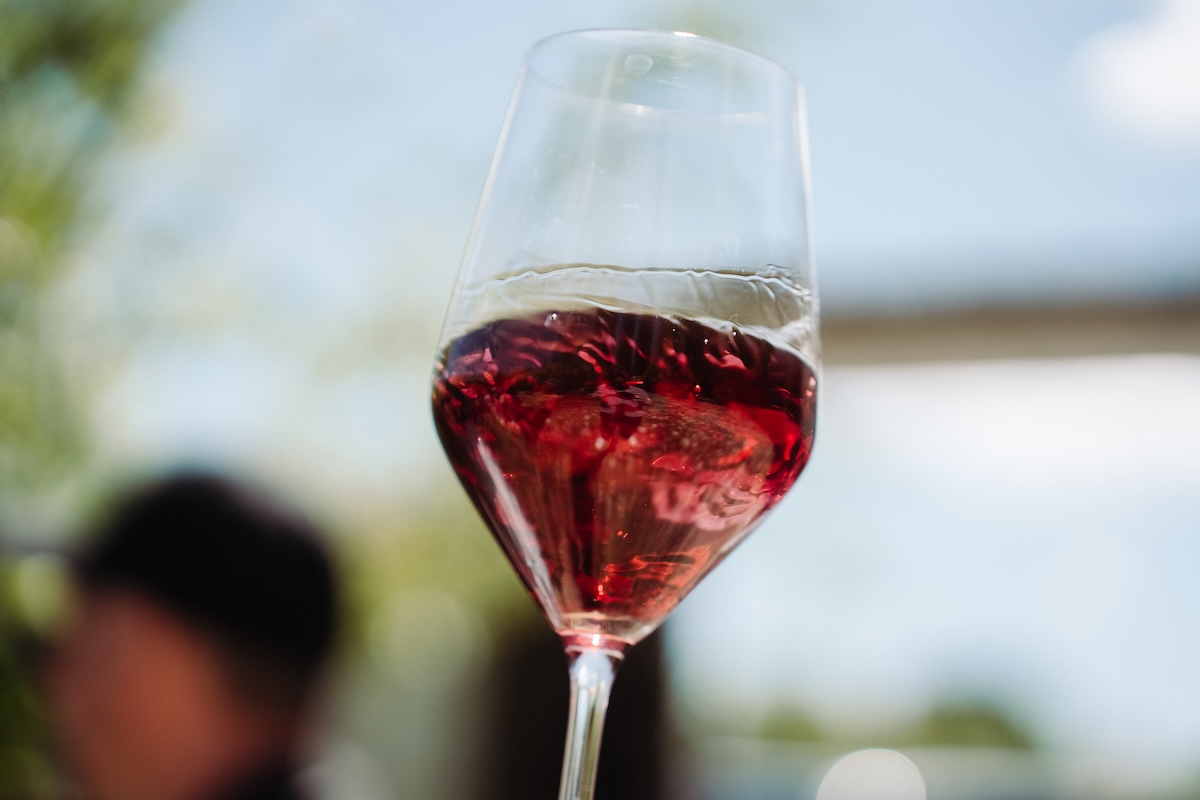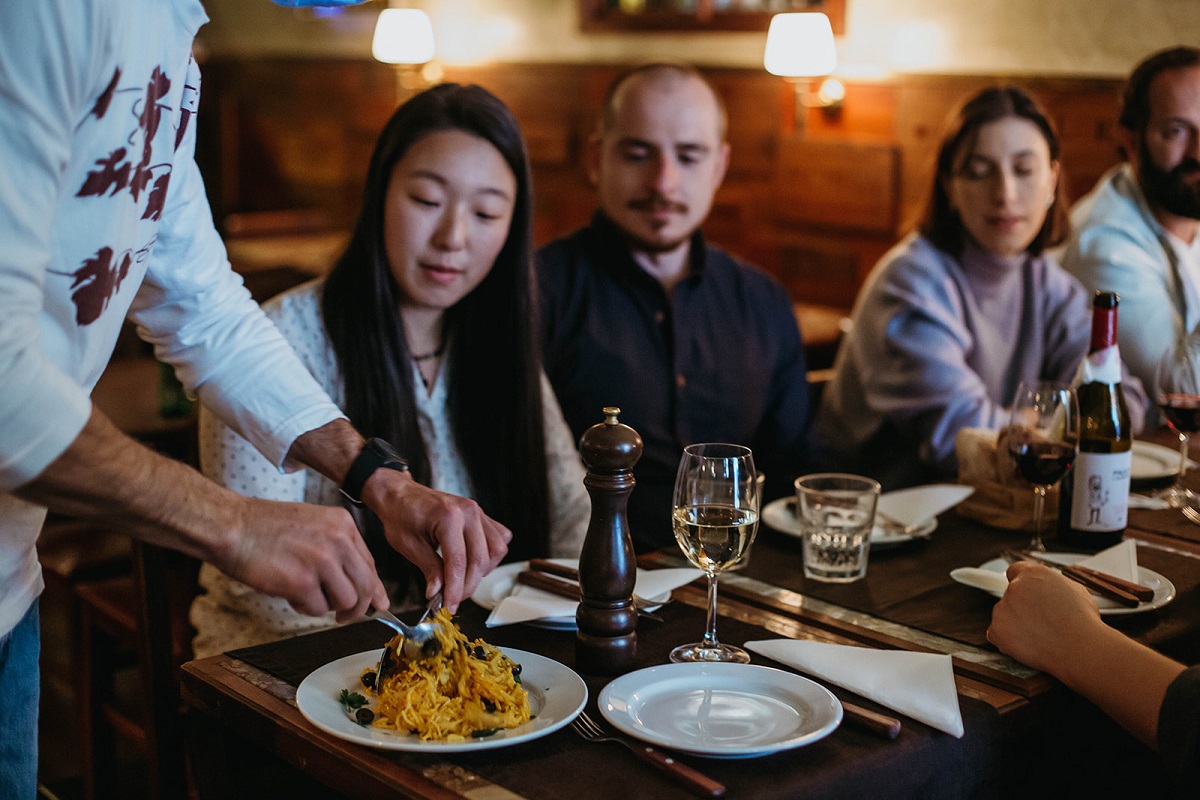To successfully navigate a meal – including ordering – in Portugal, you’ll need to understand the country’s eating culture and habits. Having a meal is more than a basic need—it truly is a cultural event, even if it’s just lunch with friends.
From understanding the menu before ordering to asking for the check, here are ten useful tips for ordering in Portugal that will give you more time to enjoy the food and less time worrying about cultural mishaps.

Our local tips for dining out
Check the stickers if you don’t have cash
Look for the stickers on the door or window that indicate all payment modes the restaurant has available. If a place only takes cash, they’ll have a sign saying não temos MB or não temos multibanco. That means they don’t take card payments, debit or credit. Others will only take card payments if your expense is over €5, and they’ll display a sign like multibanco acima de €5 (card payments for over €5).
Wait to be seated
If you don’t have a reservation, wait at the entrance or at the bar (if there is one) for a staff member to greet you. They will usually ask quantos são? (how many are you) or quantas pessoas? (how many people). Your answer can be as simple as the number of people, without much formality. Brush up your language skills by saying the number in Portuguese (hint: they sound a lot like Spanish) or simply signal them with your hands.

Most restaurants will bring you the menu and the wine list, if there is one, as soon as you find a table or they show you one. Some places will bring you the appetizers (cheese, bread, olives) as soon as you sit. Keep in mind that these aren’t complimentary and you can immediately tell the waiter to take them back with a não, obrigado/a (no, thank you).
A quick vocab lesson: the menu will be called menu, lista or carta. Entradas are starters or appetizers and pratos do dia are the daily specials. Traditional Portuguese food restaurants will list meat dishes under carne and fish dishes under peixe. Drinks are bebidas and desserts are sobremesa.

Know what sides to expect
At a typical restaurant, sides are usually included in the price of the dish and they may not be listed. To find out what they’re served with just ask vem com quê? (comes with what) or vem acompanhado com quê? (a more formal way to inquire about the sides).
Grilled and fried meat usually come with rice and fries, and fish comes with boiled potatoes and vegetables.
Salad is usually extra and typically includes lettuce, tomato, and onions. The waiter will ask you quer salada? (do you want salad?).

Consider the starters
Entradas, or starters, in most restaurants are bread (pão), azeitonas (olives), cheese (queijo), and cured meats or enchidos (sausages) like chouriço (chorizo), paio (made with pork loin), or presunto (ham).
Some starters may come in the form of petiscos and they may be listed under para picar. This expression roughly translates into pecking or nibbling and it’s sort of an informal pre-meal to open up an appetite for the main course.
Consider your drink options
Water, beer, and soft drinks are typically listed under bebidas. If a restaurant has more than Sagres and Super Bock beers on offer, it will list them separately under cervejas. The wine list is separate and is called carta de vinhos or lista de vinhos.
Some restaurants keep their wine list short and highly curated, so the vinhos will be split between branco (white) and tinto (red). Most lists will have the region of origin in brackets.
For the typical restaurants that seem to serve all wines under the sun, they usually split the list in branco and tinto and then per region of origin. And don’t forget about blushing local wines – rosé wine has been picking up traction in the last few years!
Wine is available by the bottle (garrafa), by the glass (a copo) or served in a jug (jarro). When ordering water, the waiter will ask you normal ou com gás? (still or sparkling), pequena (small bottle) or litro e meio (a big 1.5 liter bottle), and fresca ou natural? (cold or room temperature).

Meat, fish—or cod?
Although most restaurants list the main courses on their menus as carne (beef, pork and poultry) and peixe (fish), some may be more specific adding a subsection for bacalhau (salted cod). As mentioned before, sides are part of the main course and therefore included. If not, they’ll be listed too.
Steaks are either mal passado (rare), médio (medium rare) or bem passado (well done). The waiter will ask you how you want your steak or you can tell them when ordering it.
Choose your favorite dessert
Unless the restaurant has its own signature desserts, the ones you’ll most likely find on the menu are mousse de chocolate (chocolate mousse), arroz doce (rice pudding), pudim de ovos (a sort of flan pudding), fruta da época (seasonal fruit), and doce da casa (house sweet) or doce da avó (grandmother’s sweet). This mysterious dessert that no one is sure who invented is a kind of layered pudding that typically includes bolacha maria (cookies), leite condensado (condensed milk) and natas (cream). Some will add egg yolk on top.
Settle in
Don’t be alarmed if the waiter comes to clear the table when you’re not quite ready to leave yet. They’re just making room for you to continue your conversation without the sight of dirty dishes. They’ll quickly ask you posso levar? (can I take this?) and then you can go back to enjoying your wine.
Unless the next reservation has arrived or the restaurant is about to close, no one pushes you to leave the table.
Ask for the check
When you’re ready to leave, ask for the check with a conta por favor. In a busy, loud restaurant, getting yourself heard might be hard. In those situations, signal the waiter and pretend you’re holding a pen and writing in the air. They will immediately understand you want the check.
At less formal restaurants, like tascas, the waiter will use your table’s paper tablecloth to sum up what you had to eat and drink quickly. Tax (IVA in Portugal) is already included.

Insider’s tip: Tipping is not mandatory but if the service was exceptional you can choose to do so. Leaving up to €4 in change is acceptable as a tip.
Update notice: This article was updated on June 27, 2024.
Ready to learn more insider foodie tips? Our Tastes & Traditions of Lisbon Tour will show you everything you need to know about navigating Portugal’s numerous cafes, taverns, shops and restaurants like a local.







It is always interesting to learn about the country facts from travelers when you are going to eat yourself. Thank!
We couldn’t agree more, Tori—thanks for reading!